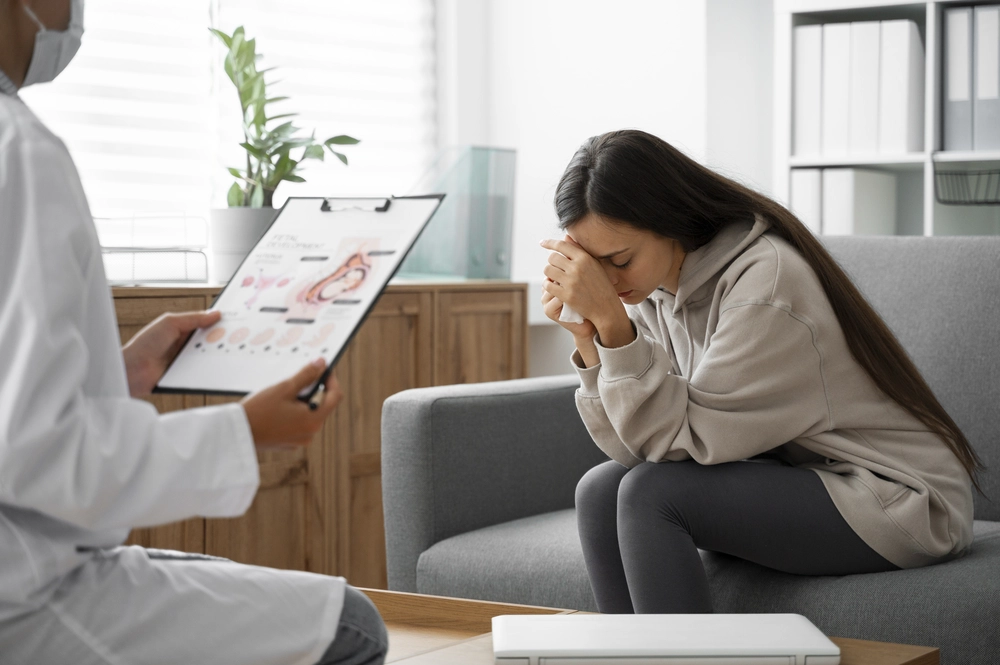Body dysmorphic disorder, or BDD, is a mental health condition where a person becomes stuck on perceived flaws in appearance. These thoughts feel urgent and true, and they often lead to checking mirrors, retouching photos, seeking reassurance, or avoiding people. BDD sits within the obsessive–compulsive spectrum in ICD-11 and appears in DSM-5-TR with insight levels that can range from good to absent. The key message is simple. BDD is real, it is treatable, and the right plan can restore daily life for the individual and bring clarity to loved ones.
1) Use CBT That is Specific to BDD
Cognitive behavioural therapy for BDD targets the cycle that keeps the worry alive. It includes:
- Clear education about how BDD works
- Thought work that tests appearance beliefs against facts
- Exposure and response prevention that reduces rituals like mirror checking, camouflage, or constant photo editing
Therapy is paced and transparent. Goals are written down, reviewed each week, and adjusted as skills grow.
Brief example: An entrepreneur who spends an hour each morning covering a perceived skin flaw learns to delay camouflage by five minutes, then ten, while practising balanced self-talk and leaving the house on time. Small steps build confidence.
2) Consider SSRIs When Symptoms are Moderate to Severe
Selective serotonin reuptake inhibitors can lower intrusive thoughts and reduce repetitive behaviors. A psychiatrist will discuss expected benefits, side effects, and the time frame for change. Many individuals do well with CBT alone for mild impairment, a choice between CBT and an SSRI for moderate impairment, and a combined plan for severe impairment. Medication is monitored closely and simplified when possible.
3) Retrain Mirror Use and Visual Attention
BDD narrows attention to tiny details. Treatment helps widen the view.
- Set short, scheduled mirror sessions with a clear task, such as grooming
- Stand at arm’s length and view the whole face or body
- Leave the room when the timer ends
With practice, mirrors become tools, not traps, and urges to correct or hide begin to fall.
4) Reduce Rituals and Safety Behavior
Rituals keep body dysmorphic disorder running. Common ones include reassurance seeking, comparing selfies, wearing heavy camouflage, and scanning faces in a crowd for judgment. Exposure with response prevention teaches people to face a feared situation while delaying or dropping the ritual.
Home support: Loved ones learn simple lines such as, “I care about you, and I will not answer appearance questions. Let us use the plan your clinician set.” This is kind and firm, and it helps with recovery.
5) Involve Families and Chosen Supports
Family accommodation often grows from love, yet it can make symptoms worse. Short sessions with relatives or close friends can:
- Explain BDD in plain language
- Show how to stop taking part in rituals
- Set up a calm evening routine that protects sleep and reduces late-night checking
- Define warning signs and who to contact if risk rises
When the home environment is aligned with the plan, gains last longer.
6) Be Cautious with Cosmetic Procedures
Cosmetic and dermatologic procedures rarely solve BDD. Satisfaction is often brief, and concern can shift to a new feature. A safer path is to treat the mental health condition first. If a procedure is still under consideration later, it should follow a careful psychiatric review to check motivation, risk, and timing.
7) Step up the Level of Care When Needed
A stepped approach keeps treatment right-sized.
- Outpatient CBT for mild to moderate symptoms
- CBT plus SSRI for moderate to severe symptoms
- Intensive or inpatient care when rituals block daily life, when insight is very low, or when there is a significant risk
Discharge planning starts early. Aftercare usually includes therapy appointments, medication follow-ups, a relapse prevention plan, and check-ins with the family.
Practical Guidance for Everyday Life
- Keep a steady sleep and wake schedule. Consistent routines reduce arousal and help therapy work.
- Limit image editing and set time boundaries for social media. Filters and comparison can spike symptoms.
- Build small, doable exposures into the week, like attending one social event without camouflage.
- Track wins. Extra minutes of sleep, fewer mirror checks, or one calm dinner are real progress.
- Seek urgent help if there is any concern about self-harm.
Case Study: An Example to Help You Understand Better
A 28-year-old professional becomes preoccupied with a perceived facial asymmetry. Work calls are avoided. Photos are retouched for hours each night. The team begins with CBT for BDD, scheduled mirror practice, and a brief family session to reduce reassurance. After two weeks, the individual adds graded exposures, such as attending one meeting with the camera on for ten minutes.
A psychiatrist reviews medication options and starts a low-dose SSRI. By week six, checking time drops sharply, camera use is steady, and evenings are calmer. The plan shifts to relapse prevention and a monthly follow-up. If you prefer a confidential, clinician-led assessment in a quiet, retreat-like setting, you can request an appointment with Sukoon Health to discuss BDD treatment options for yourself or a loved one.
Conclusion
BDD can feel relentless, yet it responds to clear, evidence-based care. Targeted CBT, thoughtful medication use, mirror retraining, and a strong home plan can turn chaos into structure and fear into gradual confidence. When symptoms are severe, a higher level of care provides the safety and focus needed to reset. With the right support, daily life becomes workable again, and the person can move toward a life that is not ruled by appearance thoughts.
